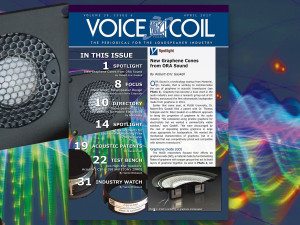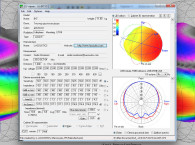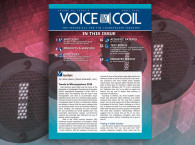 As this issue of Voice Coil shows, there's evolutionary progress and even revolutionary technologies gaining space in the industry. In this edition's Spotlight, Robert-Eric Gaskell introduces our readers to new graphene cones from his company ORA Sound. Following a preview at CES 2017 and a presentation at the ALMA Winter Symposium, ORA Sound is making headway in the use of graphene in acoustic transducers. This technology startup from Montréal, Canada, has managed to convert graphene oxide (GO) into a viable solution for use in complete speaker drivers, cones or even headphone drivers. As Gaskell explains in his article, "We wanted the mechanical characteristics of graphene, but in a material that was competitively priced and compatible with dynamic transducers.”
As this issue of Voice Coil shows, there's evolutionary progress and even revolutionary technologies gaining space in the industry. In this edition's Spotlight, Robert-Eric Gaskell introduces our readers to new graphene cones from his company ORA Sound. Following a preview at CES 2017 and a presentation at the ALMA Winter Symposium, ORA Sound is making headway in the use of graphene in acoustic transducers. This technology startup from Montréal, Canada, has managed to convert graphene oxide (GO) into a viable solution for use in complete speaker drivers, cones or even headphone drivers. As Gaskell explains in his article, "We wanted the mechanical characteristics of graphene, but in a material that was competitively priced and compatible with dynamic transducers.” And speaking of innovation in loudspeaker technology, check this month’s article By Mike Klasco and Steve Tatarunis on Microspeaker Design. If there’s an area in the industry that’s evolving faster than any other it is this class of small to really tiny drivers, used in a diverse range of applications from consumer electronics to audio-enabled electronic projects. As the article explains, most microspeaker vendors started out making low-end devices such as TV speakers, buzzers and tiny PC speakers, but the recent proliferation of smartphones and other miniature audio devices provided new opportunities, leading to the creation of giant industrial companies in this field. With production of more than 1 billion units per year and orders from smartphone makers, no wonder innovation in this area is happening at a fast pace.
And if you want to learn more about the major players in micro speakers and mobile electronics for those applications, check out the directory compiled by Nora Wong, with a comprehensive description of the companies.
Charlie Hughes (Excelsior Audio Design & Services) discusses Measurements for Loudspeaker Modeling Files. This is an area increasingly required by manufacturers who want to provide their clients with the tools needed for analysis and prediction software and processing. Loudspeaker modeling files are most often used with acoustical modeling programs such as EASE, Focus, CATT-Acoustic, and others to help determine how well the loudspeakers cover the audience areas and how much “spill” there is on the room’s surfaces. Charlie Hughes shares his experience on how to do it and what is required to achieve those measurements.
And, there's nothing more innovative than those inventions that no one was able to predict could happen, much less understand how they are achieved. In this month's Acoustic Patents, James Croft (Croft Acoustical) addresses one of those inventions on a Dual-Level Rotational and Precision Linear Magnified Amplitude Transduction Loudspeaker. Disclosed as a new class of low-frequency loudspeaker system, developed by the prolific father/son invention team of
Abril Tonto and Abril Tonto, Jr., the solution is said to have large potential for its high acoustic power density, small enclosure volumes, and extended low-frequency bandwidth. So much so, that even James Croft doesn't hesitate to call it revolutionary.
 And nothing better illustrates how companies continue to push forward in the loudspeaker industry as Vance Dickason's Test Bench, which focuses on two high-end players: highly respected German home/car audio OEM transducer manufacturers, Accuton and ETON. From Accuton, Vance characterizes the C30-6-358, a new “Cell Concept” neodymium motor ceramic diaphragm 30 mm tweeter. From ETON, he measures its 28 mm magnesium ceramic diaphragm neodymium motor tweeter, the 29HD2.
And nothing better illustrates how companies continue to push forward in the loudspeaker industry as Vance Dickason's Test Bench, which focuses on two high-end players: highly respected German home/car audio OEM transducer manufacturers, Accuton and ETON. From Accuton, Vance characterizes the C30-6-358, a new “Cell Concept” neodymium motor ceramic diaphragm 30 mm tweeter. From ETON, he measures its 28 mm magnesium ceramic diaphragm neodymium motor tweeter, the 29HD2.If you already subscribe, just go here - www.gotomyvcoil.com - to download the April 2017 issue.
Voice Coil is free for industry professionals. To qualify for a free subscription to Voice Coil, or renew your subscription, just go here: audioxpress.com/page/Voice-Coil-Subscriber-Services.html.






